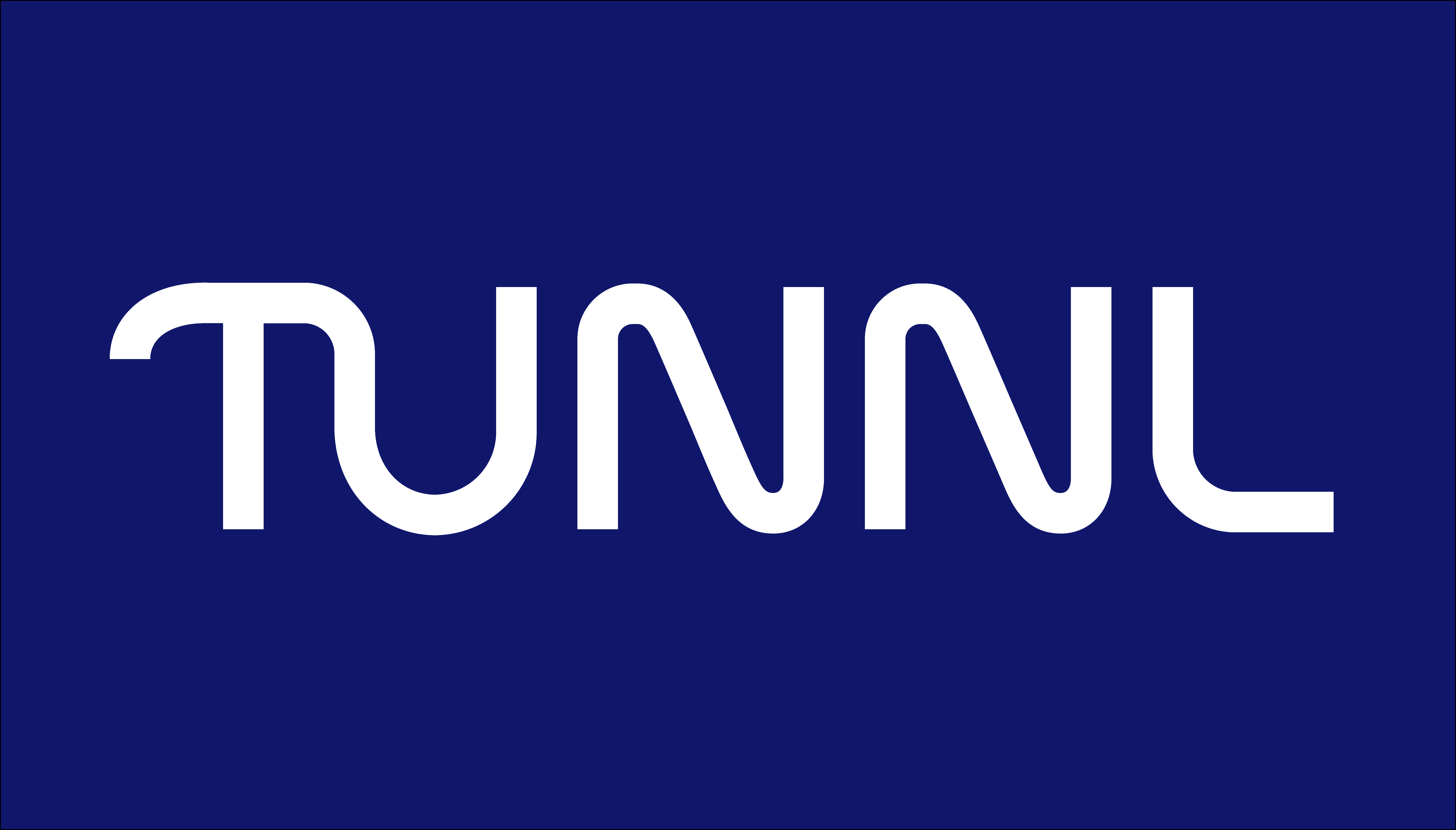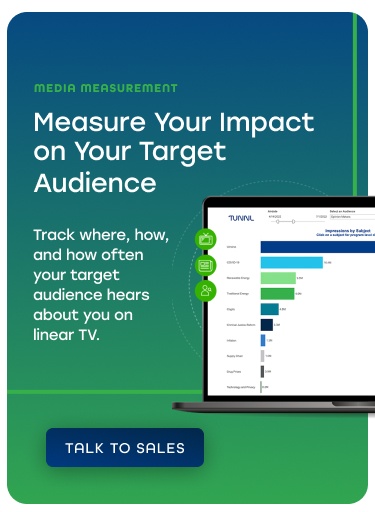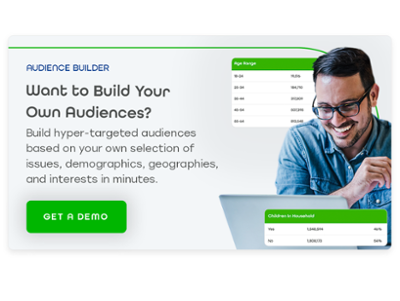The Death of Third-Party Cookies & The Future of Advertising

Brent is the Co-founder and Chief Data Science Officer at Tunnl.
Updated May 2024
Google has announced that it will completely deprecate third-party cookies in 2025.
So where does that leave advertisers who rely on third-party cookies for accurate targeting and campaign tracking? Up a creek, unless they can find alternatives to third-party cookies that deliver exceptional accuracy.
Tunnl has been operating on a cookieless targeting model for years, perfecting the way advertisers reach their precise audience in the most efficient, effective, and privacy-compliant way possible. So, we know what you need to confidently take on a cookieless future.
We'll cover what you can expect from a post-cookie world, and how to transition the Tunnl platform can quickly convert you to a cookieless future of accurate ad targeting.
Table of Contents
I. Get Ahead Of Third-Party Cookie Changes With Tunnl’s Cookieless Targeting Solutions
II. What’s the Difference Between Cookie-Enabled Targeting vs Cookieless Targeting?a. How Does Cookie-Enabled Targeting Work?
b. How Does Cookieless Targeting Work?III. How to Transition to Cookieless Targeting Solutions
a. Third-Party Cookie Alternative #1
b. Third-Party Cookie Alternative #2
c. Third-Party Cookie Alternative #3IV. The Best Cookieless Targeting Solution for Issue-Based and Purpose-Driven Advertisers
Get Ahead Of Third-Party Cookie Changes With Tunnl’s Cookieless Targeting Solutions
Tunnl is a direct alternative for precise audience targeting without third-party cookies. You won’t sacrifice accuracy, reliable campaign measurement, or a single minute of the precious time ticking down before cookies are toast.
Third-party cookies are not part of how we collect data or how we build Tunnl audiences.
We're ready to help you transition to the post-cookie world with more audience insights and more precise targeting than your cookie-enabled campaigns could ever provide, all available in Tunnl’s audience intelligence platform.
Still need to investigate third-party cookie alternatives for audience targeting? Keep reading.
What’s the Difference Between Cookie-Enabled Targeting vs Cookieless Targeting?
Let’s review what you’re leaving behind and what’s available as a replacement.
How Does Cookie-Enabled Targeting Work?
Cookies are blocks of data collected on sites as users traverse the web. They are the breadcrumbs that help marketers create personalized user experiences and enable advertisers to reach relevant people with their campaigns.
The two types of cookies you hear about often are:
- First-party cookies are collected directly on the website a user is visiting.
- Third-party cookies are collected by a third party wherever the third party’s server code is present and are used to track a visitor’s journey across multiple sites.
The multi-site data offered by third-party cookies is what many advertisers have been heavily leaning on since the 90s.
Advertisers have long favored third-party, cookie-based audiences because they were trackable. Because of how they capture user activity across the web, third-party cookies make it easier to track conversions and attribute them to certain actions or elements in the user journey. ROI is easier to dig into with third-party cookies and the tracking they provide.
 However, tracking is also the Achilles heel leading to the deprecation of third-party cookies across major browsers.
However, tracking is also the Achilles heel leading to the deprecation of third-party cookies across major browsers.
While loved by advertisers, third-party cookies are on their way out because their ability to track information is unpopular among privacy-conscious consumers.
As more users and browsers block third-party cookies, the data derived from these breadcrumbs becomes less reliable. It’s fragmented, telling an incomplete story about what users are interested in. Third-party cookies are not the most trustworthy resource for reaching people who will care about your ads.
Advertisers must bake cookieless solutions into their advertising plans by the end of the year, but with the dwindling reliability and availability of third-party cookies, it’s an opportunity to pivot to more accurate audience targeting.
How Does Cookieless Targeting Work?
Cookieless solutions securely connect advertisers to their target audience without relying on third-party cookies. These methods still use data to ensure relevant ads are shown to the right audience and offer more precise targeting than cookie-enabled campaigns.
This is achieved in a few ways, most commonly:
- Contextual targeting that shows an ad based on the keywords, website content, and other metadata a user is interacting with at a given time
- Anonymous aggregate targeting that groups people together based on known characteristics, interests, or values
For example, Tunnl’s cookieless audience targeting solutions are powered by data aggregation. Our library of issue-based audiences is built through self-reported values, verifiable traits, and decades of machine learning. Each resulting audience is an addressable group of people who hold the same stance on a hot-button issue, share characteristics, and/or have a common interest.
This is a particularly viable solution for public affairs and purpose-driven advertisers who want to reach audiences based on their values.
Some advertisers have hesitated to switch to cookieless targeting because conversion tracking is less accessible than cookie-enabled advertising. However, there are other methods for monitoring the success of a cookieless campaign like brand reputation and recall improvements.
At Tunnl, we use movement studies to track how a particular audience feels about an issue or brand over time after seeing an advertiser’s campaigns on the subject. Though not directly tracking conversions, cookieless campaigns matched to audiences who care about a campaign’s message produce brand memories that deliver higher lifetime value to advertisers.
How to Transition to Cookieless Targeting Solutions
Google's decision to end third-party cookies is not bad for Google—it’s a blow to advertisers and marketers who have historically relied on that technology.
Advertisers have limited time left to make the switch to cookieless solutions, but they have a few options:
- Develop ad models that rely on their own first-party data
- Create a new form of identity-based tracking that would bear some similarities to cookies
- Seek and partner with vendors who do not rely on third-party cookies to help you reach your target audience in a privacy-compliant way
Third-Party Cookie Alternative #1: Develop ad models that rely on their own first-party data
This is likely the first reaction of companies and brands that currently rely upon third-party cookies to gather data. Instead of being relegated to walled gardens established by ad platforms, advertisers could capitalize on the first-party data they have on their customers, constituents, visitors, etc.
For some, this is the best route. However, this option is a non-viable solution for companies and brands that are not able to efficiently gather thorough first-party information.
And the scope of this data is limited; advertisers who are able to efficiently and securely gather data on their audience are still only working with information on people they’ve already interacted with. Additional data is required to reach similar people who haven’t interacted with an advertiser yet.
Tunnl Tip: You can expand the value of your first-party data when you onboard it into Tunnl’s platform. Audience insights provide prescriptive guidance on how to reach your existing customers most efficiently and effectively, while lookalike audiences expand your reach to more people in your target audience.
Third-Party Cookie Alternative #2: Create a new form of identity-based tracking that would bear some similarities to cookies
This is a great solution - however, it is not very practical.
First of all, something like this would require a long development time. Secondly, developing an identity-based tracking solution would be an ambitious project for companies and brands to implement, let alone maintain.
Ambitions aside, advertisers are nearly out of the time it takes to build their own alternative to cookie-based targeting. Third-party cookies as we know them will be gone within the year. Building a proprietary identity-based tracking solution takes much longer. Advertisers need a viable solution now.
So, unless you started developing your new identity-based tracking system when Google first announced its intention to ditch third-party cookies in 2020, this may not be a suitable solution for your organization.
Third-Party Cookie Alternative #3: Seek and partner with vendors who do not rely on third-party cookies to help you reach your target audience in a privacy-compliant way
Cookieless data providers like Tunnl have been preparing for the deprecation of third-party cookies for a while, so they are prepared to fill any data gaps advertisers will experience once they’re gone.
These vendors are a great solution for those in purpose-driven marketing who need to adapt to the cookie changes and need help gathering first-party data without investing time and resources to build the infrastructure internally. Vendors can even shed additional light on who an advertiser’s target audience may be, unlike cookie-enabled targeting, further informing efficient media planning efforts.
Your options for cookieless vendors include third-party audience data providers or the data collected by ad platforms themselves.
But beware the walled gardens ad platforms like Google may force you into.
 Google will still collect first-party data — that is, what users do when they’re using its products, like YouTube and Search — and it will target ads to people based on it. That first-party data becomes even more valuable to advertisers as third-party data sources dry up.
Google will still collect first-party data — that is, what users do when they’re using its products, like YouTube and Search — and it will target ads to people based on it. That first-party data becomes even more valuable to advertisers as third-party data sources dry up.
Instead, you could work with a partner like Tunnl. Our data encompasses the broader world beyond Google’s walled garden, including various sources of self-reported, observable, and modeled audience data to help advertisers reach people in the most efficient and accurate way possible.
The Best Cookieless Targeting Solution for Issue-Based and Purpose-Driven Advertisers
Purpose-driven marketers are more severely affected by third-party cookie changes and need to critically screen for cookieless solutions.
Why?
It comes down to one simple fact: It is harder to understand how a consumer feels about certain issues and what motivates them to take action than it is to identify someone who might buy a product.
Purpose-driven marketing requires a lot more data that many companies are not prepared to handle now or when Google deprecates third-party cookies. Many advertisers rely on third-party cookie data to understand how specific populations feel because they do not have the resources, capability, or reach to gather the necessary data themselves.
The best cookieless targeting solutions for purpose-driven advertising will be those that:
✅ Can anticipate and adapt to constant privacy changes while eliminating data gaps caused by third-party cookie deprecation.
✅ Respect user privacy and ensure privacy compliance as a data provider.
✅ Provide advertisers with more information on their target audience like media consumption data, demographic information, etc. that enhances your media planning experience.
✅ Offer more precise audience targeting than cookie-enabled solutions.
✅ Deliver issue-based audience targeting solutions that help advertisers reach people according to what they care about.
And if you need a shortcut to a vendor who checks all the boxes, Tunnl specializes in cookieless audience intelligence solutions for issue-based and purpose-driven advertisers. Our library of issue-based audiences come alive with robust insights that help you reach your target audience better than third-party cookies ever could.
Need to know more about what goes into an effective third-party cookie alternative? Keep reading about how Tunnl builds cookieless audiences for maximally precise targeting and unparalleled impact.


